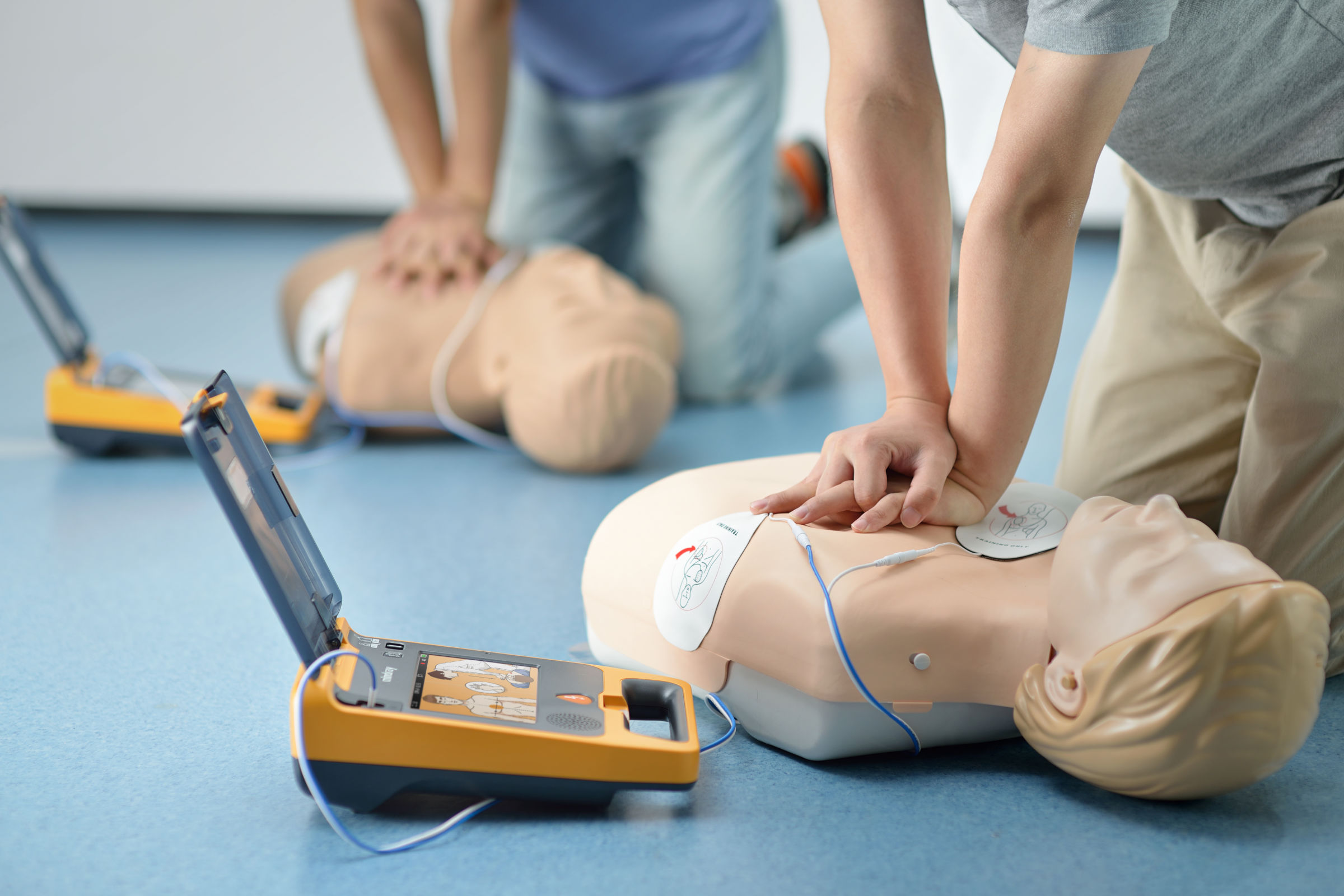In times of emergency, knowing how to use an AED defib could mean the difference between life and death.
These portable devices are designed to deliver an electric shock to the heart, restoring its normal rhythm during sudden cardiac arrest. Let’s delve into the mechanics of AED defib and understand how they function.
Understanding AED Defibrillators
AED defibs are compact, user-friendly devices commonly found in public spaces, workplaces, and healthcare facilities.
They are specifically designed for individuals with minimal medical training to use in emergencies. The primary function of an AED defib is to analyse the heart rhythm and deliver a shock if necessary to restore normalcy.
Components of an AED Defibrillator
To comprehend how AED defibs operate, it’s essential to familiarise yourself with their key components:
- Electrode Pads: These adhesive pads are placed on the patient’s chest to dacetect the heart’s rhythm and deliver the electrical shock.
- Control Panel: The interface through which users operate the AED and defibrillator. It typically includes buttons for power, shock delivery, and audio prompts.
- Battery: Powers the device and ensures it remains operational during emergencies.
- Internal Circuitry: The brains behind the AED defib are responsible for analysing heart rhythms and determining the need for a shock.

How do AED Defibrillators Function?
The operation of an AED defib can be broken down into simple steps:
- Power On: Upon activating the AED defib, it performs a self-check to ensure all components are functioning correctly.
- Apply Electrode Pads: The electrode pads are placed on the patient’s bare chest. These pads detect the heart’s rhythm and relay information to the AED defib.
- Analyse Rhythm: The device analyses the heart rhythm to determine whether a shock is necessary. It distinguishes between shockable rhythms like ventricular fibrillation and non-shockable rhythms like asystole.
- Shock Delivery: If a shockable rhythm is detected, the AED defib prompts the user to stand clear and delivers a controlled electric shock through the electrode pads.
- CPR Guidance: In addition to shock delivery, many AED defibs provide audio and visual prompts to guide users through cardiopulmonary resuscitation (CPR) until emergency medical services arrive.
- Continued Monitoring: After delivering a shock or initiating CPR, the AED defib continues to monitor the patient’s heart rhythm and provides instructions as needed.
Importance of AED Defibrillators
The widespread availability of AED defibs has significantly improved survival rates for sudden cardiac arrest victims.
Prompt defibrillation within the first few minutes of cardiac arrest can increase the chances of survival by up to 70%. This makes AED defibs invaluable assets in public safety initiatives and healthcare settings.
Training and Accessibility
While AED defibs are designed for ease of use, proper training enhances effectiveness and confidence during emergencies. Many organisations offer basic life support (BLS) courses that include AED defib training, empowering individuals to respond effectively to cardiac emergencies.
Conclusion
AED defibrillators are lifesaving devices that play a crucial role in the chain of survival for sudden cardiac arrest victims. Understanding how they function and being prepared to use them can make a significant difference in saving lives.
With their intuitive design and widespread availability, AED defibs empower individuals to become proactive first responders in emergency situations. By increasing awareness and accessibility to these devices, we can create safer communities where everyone has the opportunity to receive timely lifesaving interventions.